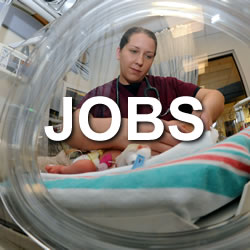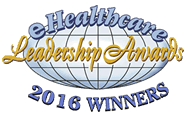Dedicated Bus Lanes: The Easiest Way to Improve Public Transit
Gary Moore | Moore Lowdown

image by: fietzfotos
The buses are there. The roadways are there. All that’s needed to make bus travel better⎯and therefore more viable⎯is the will to give them their own lane once in a while.
Each year, cars and trucks cause more air pollution in the United States than any other source, pumping roughly 1.6 billion tons of carbon dioxide into the atmosphere (8x more than all the world’s volcanoes).
Needless to say, reducing the number of cars on the road each day is a straightforward means of reducing pollution. Walking and bicycling can help, but not everyone can do that for every trip. Rail transit can help, but that can mean major construction projects even to existing systems, which generally do not cover areas as thoroughly as roadways.
Often overlooked is the humble bus. The ultimate in carpooling, it can get you where you need to go, and it’s available just about everywhere right now. But because of how long trips can take compared to cars and how behind schedule many bus lines run during peak hours, a relatively small percentage of Americans view buses as a viable option.
There’s an easy fix for that, though: dedicated bus lanes (DBLs).
The concept couldn’t be simpler: take an existing traffic lane along major routes and make it “bus only” during peak hours. With that single change, suddenly bus trips can become faster than car trips, since they encounter little or no traffic…which makes them a more viable option…which means more people take them…which takes cars off the road…which reduces air pollution. (Even a petrol-powered bus⎯never mind the hybrids and electric buses that are the new breed⎯emits only 20 percent as much CO2 per passenger as a single-occupant auto.)
With such a straightforward path to so many benefits, you’d think the concept would be widely implemented. But it isn’t. How many miles of DBLs exist nationwide? Well, most U.S. cities have none, but a few salient examples give us the lay of the land. New York City, for example⎯a metropolis notorious for car congestion⎯had 144 miles of DBLs at the beginning of 2020, accounting for just 0.76% of all lane miles citywide. On the opposite coast, a grand total of two DBL lines serve all of traffic-snarled Los Angeles.
Keep in mind these lanes are dedicated to buses only a few hours per day and require almost no new infrastructure. “Bus lanes are […] one of the cheaper options for improving public transit,” notes Curbed’s Alissa Walker. “The beauty of a bus lane is that it doesn’t require much additional infrastructure or planning. Some red paint creates a nice ‘red carpet’ effect, but […] you really only need a few cones and some enforcement to make the whole thing work.”
Red paint, though, is the gold standard for DBLs. “It makes the street more intelligible and make people understand what the function of the street is,” National Association of City Transportation Officials spokesperson Alex Engel told Streetsblog. “It really does change behavior. If it’s just [uncolored] marking, motorists often don’t realize they’re driving in a bus lane.”
In December 2019, the Federal Highway Administration issued new, streamlined guidelines to make it easier for cities to do just that. And considering that approximately $180 billion is spent on the more than 2.8 million miles of paved roads in the U.S., making this the nation’s single largest infrastructure component, cones/paint/signage is a small price to pay to reduce traffic and greenhouse gas emissions.
When cities make the investment⎯including enforcement⎯results follow. As Bloomberg’s Laura Bliss notes, DBLs “can allow buses to carry upwards of four times as many travelers per hour than a general traffic lane […,] doubl[ing] or tripl[ing] bus speeds by eliminating delays caused by single-occupancy vehicles.”
Widely considered to have America’s best public transit system, Seattle is a success story. As Bliss pointed out in 2018, despite a 15 percent population increase since 2010, “[t]he number of commuters driving private vehicles downtown has declined by 10 percent.” All this impact from a mere 40 miles of DBLs, which covers less than 1 percent of the city’s total lane miles.
All alternatives to cars are beneficial to cities, the environment, and the people who inhabit both. By simply dedicating single lanes to bus travel during peak hours, those benefits can be had right here, right now.

Introducing Stitches!
Your Path to Meaningful Connections in the World of Health and Medicine
Connect, Collaborate, and Engage!
Coming Soon - Stitches, the innovative chat app from the creators of HWN. Join meaningful conversations on health and medical topics. Share text, images, and videos seamlessly. Connect directly within HWN's topic pages and articles.
















